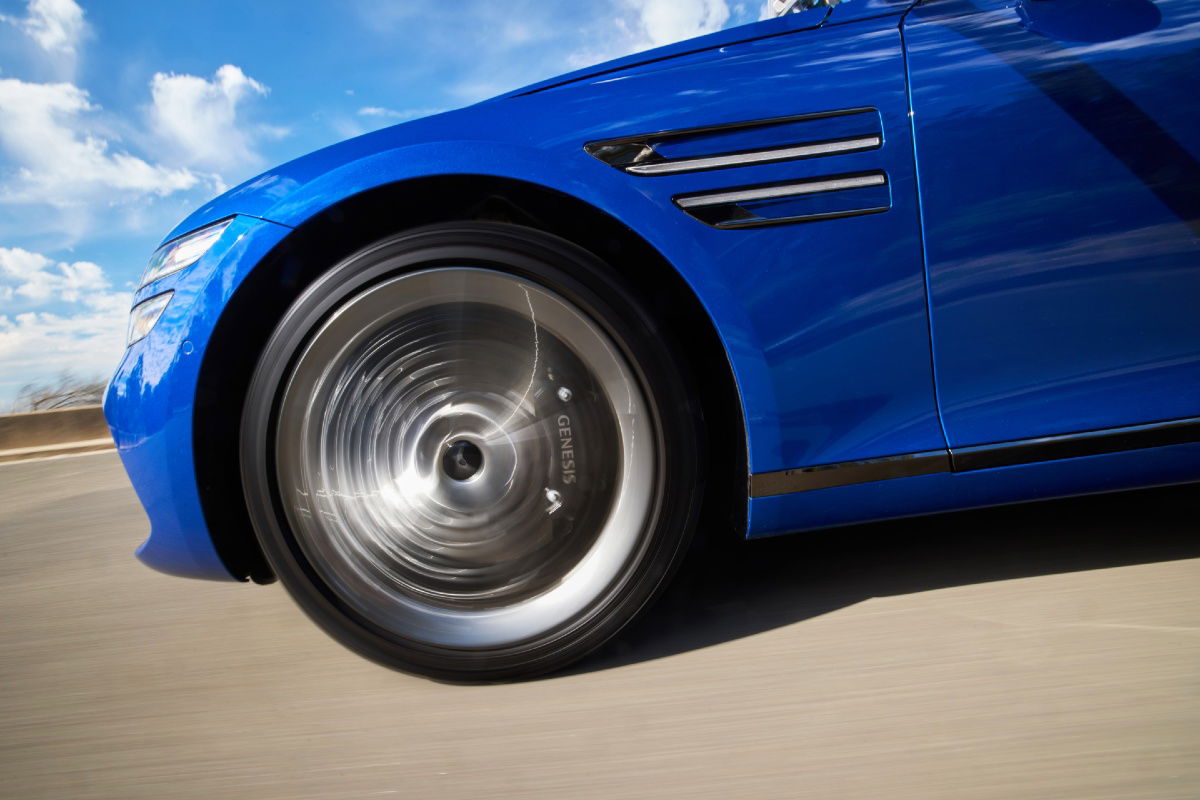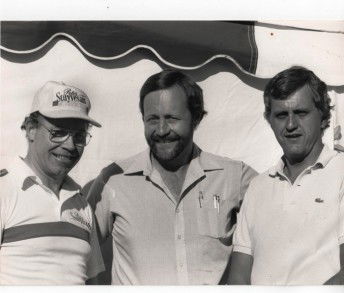

Where do you start when introducing someone that has mixed shoulders with some of the greats of motor sport, people like Sir Jack Brabham, Sir Stirling Moss, then Ayrton Senna, Alan Jones and Barry Sheene.
The list of drivers, riders and racing events that Will Hagon has brought into the lives of people that adore motor sport is endless. From Formula One, to SportsCars, great events like Le Mans and Bathurst, to the smallest events at Catalina Park and Winton.
Hagon knows no prejudice; he has a long love of motor sport, whether it be categories racing on four wheels or two.
Since the mid-1960s, Hagon has interviewed everyone that is anyone in motor sport, he has brought events into our homes via television and radio and brought us all the news from the track.
In addition to a long career in sports media he is a well known motoring journalist, he was a producer, and a highly regarded track commentator.
Hagon has been involved in motor sport for over 50 years, he managed to carve out a successful career doing something he loved and has been lauded along the way.
Hagon was first introduced to racing at Sydney Showground’s Speedway Royale. Sprintcar racing captured his imagination and motor sport was fostered further by his step-father who worked at Goliath cars.
He went to his first big event in 1959, which happened to be Bathurst, where he watched Jack Brabham, Bib Stillwell and David McKay in the rain.
After leaving school Hagon became a clerk, but in 1965 he got his first opportunity to call a race which led to a phone call from Channel Seven.
“I got the opportunity to do some commentary on Australia day in 1965 at Catalina Park,” Will Hagon told Speedcafe.com.
“I wandered into the commentary box; big names like Peter Wherrett were around at that time.
“I never had a concept of race commentary but I just thought I could get up there and announce the next event and who was in it, but I quickly found out that they expected more than that, I had to explain what was happening in the races.
“By the end of the year when Channel Seven needed some help with its Bathurst broadcast my name was put forward.
“I was sitting at work as a clerk at QANTAS and the phone rings and it was Channel Seven asking if I’d like to work with them at Bathurst. Of course I said yes and off I went; I ended up doing 11 Bathursts for Channel Seven.”
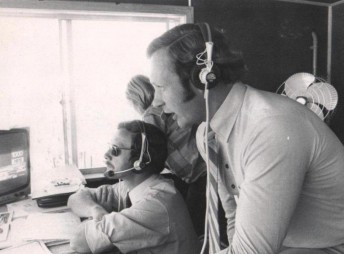
Having been given a break, Hagon’s race calling career had taken off. Aside from Bathurst he covered the London to Sydney (Car Rally) Marathon, he called races at Catalina Park, Oran Park and Warwick Farm, he made appearances on Rex Mossop’s ‘The Club’ television show, he worked alongside long time ‘Wide World of Sport’ presenter Ian ‘ The Bear’ Maurice and started calling motor bike races.
Having focused on local racing, his wife talked him in to going overseas.
“We headed off to Europe with a plan that I’d do any work I could find and take in as much motor sport as possible,” said Hagon.
“I tried to get work at Brands Hatch, Oulton Park, Snetterton and Silverstone but there was nothing there.
“I ended up getting a job at Thruxton then Channel Seven called me asking me to come back for Bathurst. We couldn’t agree on terms, but they sent me a video of Bathurst to show Stirling Moss, which helped get him out to Australia to race.
“The work at Thruxton went very well and I ended up working at all the circuits that had knocked me back, in-fact I ended up getting work all over England.
“I thought when I went over to Europe that I’d be heading over to the continent to do race meetings over there but I was so busy in England that I didn’t have time. The only one I did get to go to was Le Mans in 1976.”
When Hagon returned to Australia in 1977 he talked to Seven about a job but Mike Raymond was well ensconced there, so he found a job at ABC calling Australian Touring Car Championship (ATCC) rounds.
“I heard that the ABC was televising the Castrol 6 Hour (motor bike race) so I got in with them,” said Hagon.
“It was my first job there and since then I’ve done a wide range of jobs in both radio and television for them.
“I concentrated on motor sport, ABC did a lot, they did the ATCC for many years, they wanted me to do the whole series, so we would do all the meetings.
“That went on into the 1980s. At one meeting in 1986 someone from ABC radio wanted to interview me and that kicked of my radio career.”
While at the ABC, Hagon was almost poached by Channel 9 but pressure from management saw him stay, but another opportunity opened up in print media soon after.
“In 1977 I found out that a key motoring journalist for the Sunday Telegraph had moved on and there was a vacancy,” said Hagon.
“I called a bloke I knew on Monday, met with the editor on Thursday, got the job and started the following Monday as a motoring journalist. I did this through to 1990 when I took a voluntary redundancy.”
While he was writing for the Telegraph and race commentating for the ABC a role came up at SBS to call 500cc Grand Prix races and he introduced Barry Sheene to a wider Australian audience.
“In the last race of 1986 Wayne Gardner had a very slim chance of winning the championship, so we went live to talk to Wayne after the event and this paved the way for SBS to broadcast the series live in 1987,” said Hagon.
“I approached management and suggested that Barry Sheene be a guest commentator when he was in Australia, he eventually settled here and took over as a permanent commentator.
“We did such a good job that Nine took it off us and Barry went over there and worked alongside Darryl Eastlake.”
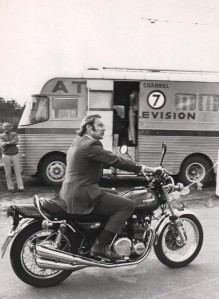
By the early 1990s Hagon had left the Telegraph and SBS and was working as a freelancer, he did some spruiking, race commentating, emcee work and produced motoring videos for Mazda, Volvo and Village Roadshow.
During this time it was a chance meeting with AMP’s CEO George Trumbull that saw Hagon introduce AMP to motor sport and take over the naming rights of the Bathurst 1000.
“I met George and took him to Bathurst,” said Hagon.
“Tooheys had dropped their Bathurst sponsorship, I knew George was a motor sport fan so I got a sponsorship package prepared and sent it to him.
“The short of it is they agreed to it. It was therefore basically organised by me, then I backed out and let them manage the process.”
Having been involved in motor sport in a variety of roles and over a long period of time, Hagon is well credentialed when asked what his favourite era is.
“If you have a vehicle that has an excess of grip over power it doesn’t look very exciting, if you have a vehicle that has more power than grip it looks fantastic,” said Hagon.
“I like the non wing era of Formula One, when they got sideways, there was wheel spin, you saw Jack Brabham with opposite lock and smoke was coming off the rear tyres.
“This is why I got involved in racing, to see the cars moving around.
“Tyres today tie them down, they are so grippy and there is so much technology driving the car creating downforce. It’s not as exciting to watch.
“I like to see them moving which is why I still like Sprintcars and bikes, I love them.”
That said, he is a fan of V8 Supercars, a sport that is highly regulated and often described by some as boring.
“V8 Supercars is a very good professional act,” said Hagon.
“It’s magnificently presented, well negotiated for TV and has wide media awareness and observation.
“However, they talk about the entertainment factor and I don’t think they’d lose one whisker of the entertainment factor by allowing differences between the cars.
“If I want to see fuel strategy and pit stops I go to Le Mans, if I want to see the fastest cars I want to see a Grand Prix.
“I don’t want to see fuel and tyre strategies determine results, let the characteristics and performance of the cars based on their differences, strengths and weaknesses show through.”
Having spent so much time working in motor sport and alongside drivers, manufacturers and media, Hagon has collected a lot of memorabilia, which leads us to his latest business venture.
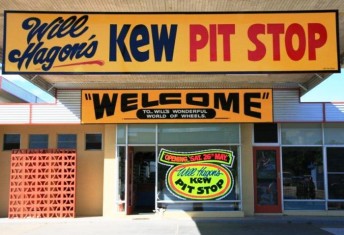
Hagon has decided to increase the space in his garage and has opened up a store in Kew, New South Wales, where he has put his entire collection on show, with many exhibits up for sale.
“People can expect to find, genuinely, an incredible array of amazing collectables, many of which have never been taken out of their boxes,” said Hagon.
“I’ve been collecting since the early 1950s, books initially then model cars.
“I’ve got almost a complete set of ‘Australian Motorsports’ magazines, it was the motor sport bible in the 1950s, 60s and into the 70s. You’ve got to remember that racing events weren’t always covered in the paper, so you’d buy this magazine each month to see what happened at Winton.
“I have pictures of me with Ayrton Senna, Jack Brabham and Stirling Moss, I opened a box the other day that had a pair of BMW Sauber running shoes, never touched, never opened.
“There are programmes galore, going back to the mid 1950s, posters, magazines, calendars, gloves, racing suits, uniforms, there’s an Alan Jones racing game, a Wayne Gardner jig saw, (Casey) Stoner stuff, Mick Doohan signed models and a huge range of model cars, like the McLaren F1.”
‘Will Hagon’s Kew Pit Stop’ can be found at 148 Nancy Bird Walton Drive (the Old Pacific Highway) Kew, New South Wales. It’s grand opening is on Saturday, May 26, and it will be open daily between 10am and 4pm.
Hagon can still be heard on ABC radio with Tony Delroy.
Will Hagon calling the Sandown round of the 1984 Australian Touring Car Championship
Will Hagon produced motoring videos for Village Roadshow


